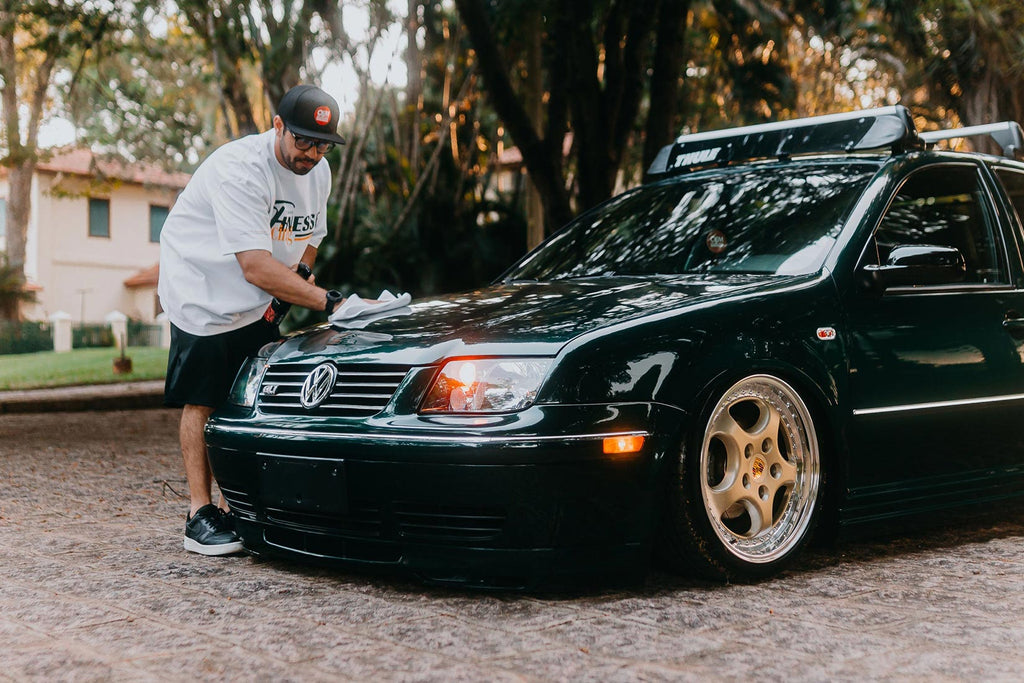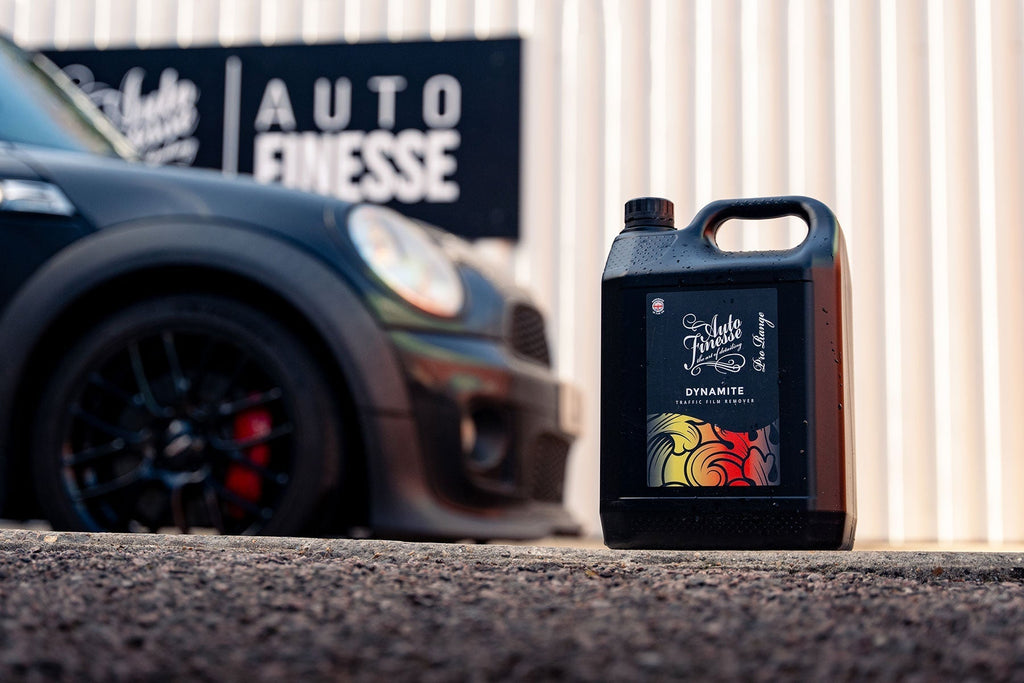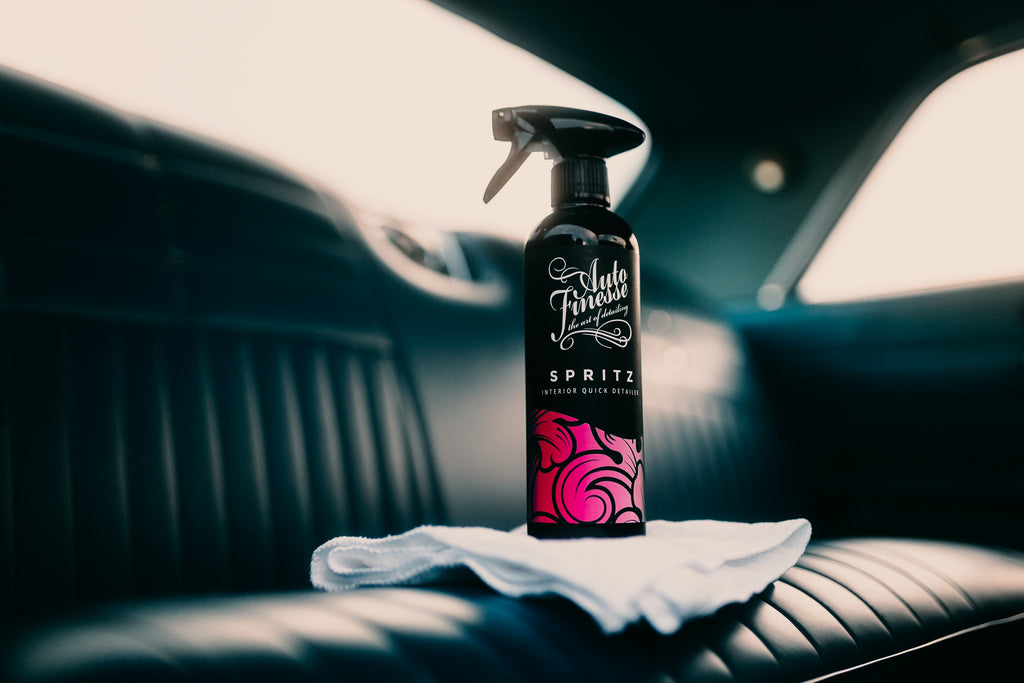Exterior Plastics

IN THIS GUIDE:
- Learn the products you need to clean and protect any plastic surface.
- Master the techniques for an impeccable finish.
- See the difference between silicone and water-based dressings.

WHY IS IMPORTANT TO CONSIDER YOUR PLASTICS?
- They're too-often forgotten, and this will not only let down any detail, but can cause irreversible damage.
- Plastic trim is notoriously susceptible to dirt impregnation and UV fading.
- Cleaning and protecting plastic trim is quicker and easier than many think.
Don't Let Your Plastic Bits Let You Down!
Exterior plastic trim are an aspect of a car's exterior that can let the whole look down if not detailed properly. So, it's extremely important not to forget them. Whether you have super-obvious bumpers front to back (think Mk2 Golf) or Audi Allroad and MINI-esque arches, they will need a thorough clean and protection during your detail.
Exterior plastic trims are the most at risk. They are exposed to damaging elements such as rain, road sand, grime, bird droppings, salt, and tree sap, all on a daily basis. Over time, these plastics can start to fade. They can also dry out and it can crack, which will then let in dust and grime particles. In other words, prevention is certainly better than cure in the case of plastics. You don't want to have to buy a new bumper just because you neglected the old one, do you?
That's where we come in. Or more to the point, that's where star products such as Revive Trim Dressing and Dressle All-purpose Dressing come in.


Always Clean Your Plastics First
It's important to remember though, that a lot of protecting your plastic trim comes with the cleaning.
Once you've washed your vehicle, clean all plastic trims using an all-purpose cleaner, such as a 1:5 dilution of Verso All-purpose Cleaner. This will help to remove any old dressings you may have applied, as well as remove any grime or oils that weren't removed at the wash stage.
Removing these will equate to more staying power from the dressing that you apply next. Once you're happy that the trims are clean, dry them with a microfibre drying towel or air-blower, removing as much moisture from the panel gaps as possible.

Revive Trim Dressing
The next stage is to apply your trim dressing. Here we're using Revive. This specially-formulated product is silicone-based and quickly helps to bring the life back into your exterior plastics, all the while offering plenty of resistance to water.
Shake the bottle to wake up the ingredients, apply a small coin sized amount to a Foam Applicator or Microfibre Applicator and work into the plastic trim with moderate pressure. Make sure it's spread evenly and wait 5-10 minutes to allow it to cure before buffing off with a clean microfibre towel.
We always like to give the trim a final buffing here, as this evens out the finish and stops any excess product that's not bonded properly from running off when it rains.
Revive is also safe to use on rubber and, once applied, the advanced formula will help to protect from future fading, with durability that exceeds conventional water-based dressings.
It's also important to remember here, not to scrub your plastic surfaces and certainly, don't use anything abrasive as this will stain or fade the plastics further and more quickly than normal. Always avoid any products containing any acid-based solutions.



Dressle All-Purpose Dressing
We also have another trim dressing in our range which can be used on engine bays, as well as inner arches and plenty of other exterior and interior plastic surfaces. Leaving an extremely natural sheen, Dressle's UV inhibitors help to prevent surfaces from fading and this advanced water-based formula contains no waxes, oils, or petroleum distillates.
If applying to the engine bay or inner wheel arches, make sure the area is clean first and then spray liberally over all plastic and rubber components. You can then simply leave to dry for 4-6 hours, before wiping up any excess after this curing time… yes, that's it!



If you're using Dressle All Purpose Trim Dressing on the exterior trim of your vehicle either spray on directly, or for more targeted application apply 2-3 spritz to a Microfibre Clothh (or Microfibre Applicator) and work in to the surface, then leave to cure.
If patching occurs simply add an additional coat.


Okay, we're chiefly talking about exterior trim here, but it's worth noting that Dressle is also a master, non-sticky product for your interior. If using on the inside of your car Dressle can be spritzed directly on to plastics before spreading and wiping away with a microfibre cloth, for a clean natural finish. Alternatively, to avoid overspray in areas where more targeted application is necessary, apply a spritz or two onto a Microfibre Cloth or Microfibre Applicator and wipe over the surface, finally buffing off with a fresh cloth.










